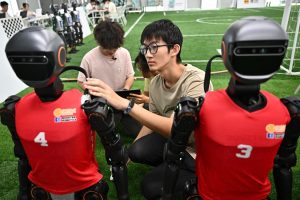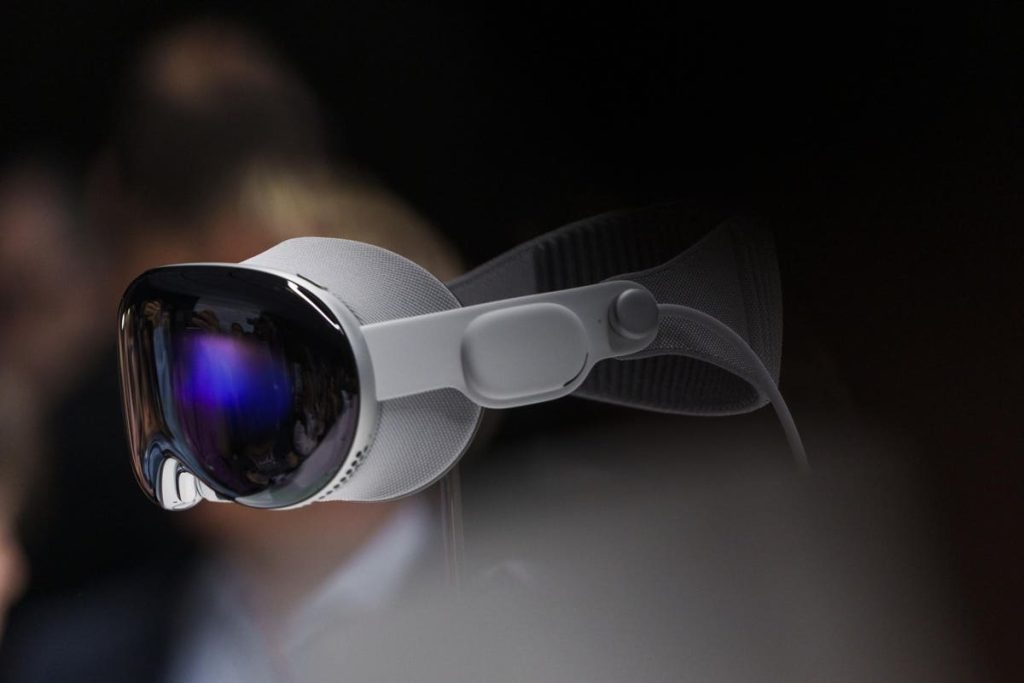In the latest edition of his weekly Power On newsletter, Bloomberg’s Mark Gurman reports in part Apple employees are concerned with the size and weight of the forthcoming Vision Pro headset. In addition, the company’s Vision Products Group, the team responsible for developing the headset, is looking at ways to reduce the size and weight of future models. Gurman says the OG Vision Pro weighs “about a pound.”
“A key focus for Apple is making its [mixed-reality] device more comfortable to wear—with a smaller and lighter design,” Gurman said of Apple’s planned future roadmap for its newest product. “The company’s first headset, the Vision Pro, has caused neck strain in testing due to its size and weight. That could turn off consumers already wary of mixed-reality headsets, which meld virtual and augmented reality.”
Apple CEO Tim Cook said last month at the company’s “Wonderlust” media event Vision Pro is “still on track” for release early next year.
Gurman’s report this weekend is notable from an accessibility perspective insofar as it corroborates plausible ergonomic concerns with wearing Vision Pro. As I wrote back in June, the ergonomic considerations of Vision Pro are equally as important (and fascinating) as its underlying visionOS software system. After all, the headset does no one any good if it’s too hefty and heavy to wear, no matter how technologically cutting-edge it is. To Gurman’s point about Vision Pro’s size and weight reportedly causing bodily strain, this is precisely the kind of issue I had in mind when I wrote extensively of the device over the summer. As I’ve written ad nauseam, wearing a computer on one’s face is a completely different beast than wearing a computer on one’s wrist (Apple Watch) or in one’s ears (AirPods). This means the ergonomic appeal is even more crucial, particularly to many in the disability community. Apple can, and likely has, make the most accessible mixed-reality software platform on the planet in visionOS; yet all that compute power means little if the device is uncomfortable to wear. As I also wrote, in this context, that Apple has stated Vision Pro gets only two hours of battery life may actually turn out to be an asset rather than a liability.
Add the hefty-in-itself $3,500 price tag, and Gurman’s right about leery customers and Vision Pro. All told, these are all factors which don’t necessarily bode well for a disabled person. Especially for a person with disabilities, it’s all the more imperative for Apple to show what, functionally speaking, is made more accessible in spatial computing.
I should state once more I’ve not had functional hands-on time with Vision Pro besides getting relatively up close to the display models following the WWDC keynote. Nonetheless, as a lifelong disabled person, what I’ve written about the headset, including in this very piece, is all legitimate informed speculation. So much of the analytical energy emanating from the tech press and pundits have focused on what Vision Pro can do in terms of software; Apple’s even hosting developer labs and seeding developer kits all over the world to help app makers build for the device. It’s not an either/or proposition—of course functionality would be central to usability and the user experience—but Vision Pro’s advent is a prime lesson in the idea that hardware accessibility matters as much, if not more so, as classical software does. It seems exceedingly obvious, and perhaps a little flippant, to point this out but it’s really true: All the patents and cameras and high-resolution displays in the world mean zilch if Vision Pro literally is uncomfortable to use. Again, this ideal is particularly true for disabled people whose condition(s) involve a certain degree of physical and sensory sensitivity such that Gurman’s aforementioned reporting on neck strain makes using Vision Pro untenable in many more ways than one. It’s a valid concern.
Even the most cutting-edge technologies contain dull ends.
Read the full article here










